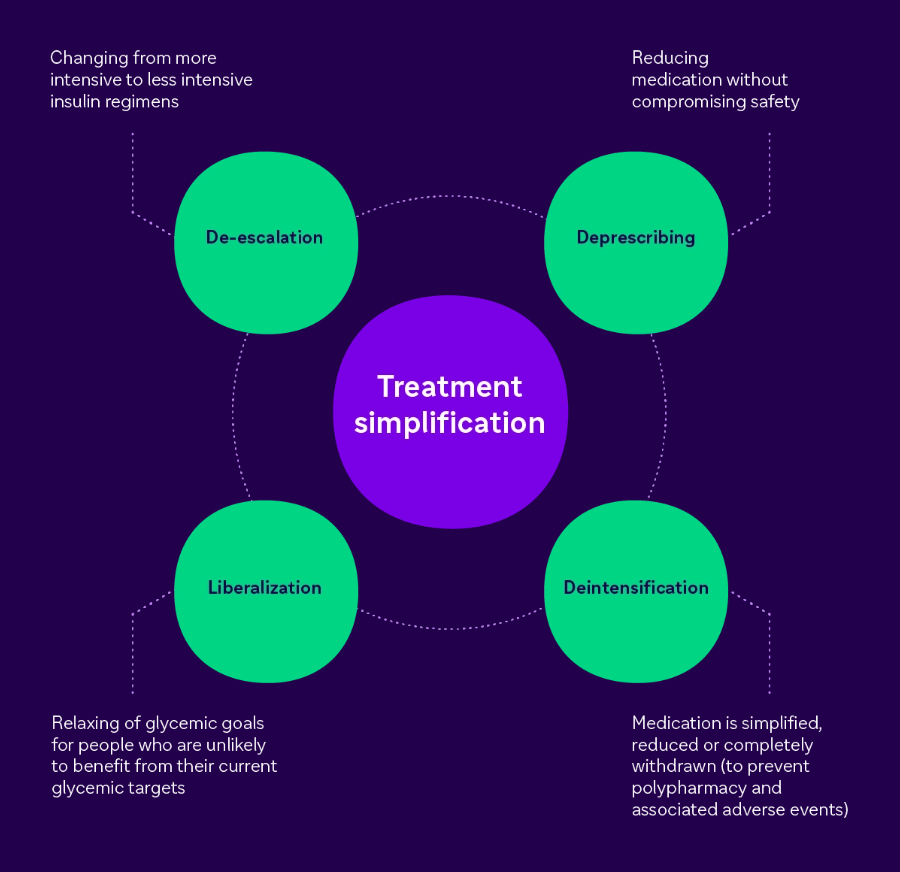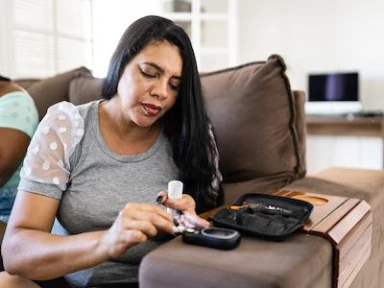Treatment simplification for adults with Type 2 diabetes
Unmet needs in people with T2D
- T2D is a progressive disease with multifaceted manifestations; despite the evolution of many glucose-lowering therapies, glycemic control remains suboptimal for many people with diabetes, and therapeutic advancement to insulin-based therapies is often required1-3
- Therapeutic advancement with complex insulin regimens is often associated with a number of challenges, including therapeutic inertia, low treatment adherence and reduced quality of life4
Factors impacting adherence to insulin therapy5

Daily injection
frequency

Injection
embarrassment

Injection
pain

Weight
gain

Hypoglycemia
(and fear of)
Simple yet effective strategies are required to help ease the burden of disease
Treatment simplification: A less-is-more approach
- Expert panel guidance recommends that treatment simplification should be defined as an attempt to decrease treatment complexity and burden of treatment, particularly insulin therapy*4
Common terminology used in the context of reducing treatment complexity4
- Potential benefits of treatment simplification include reduced polypharmacy, improved adherence to treatment , reduced risk of hypoglycemia and improved quality of life4
Simplifying T2D therapy strategies, when suitable and without compromising treatment efficacy and safety, offers the opportunity to ease disease burden
- While recent guidelines support the concept of simplification, they primarily focus on the older adult population.6 Clear guidance on how simplification can be achieved is lacking, highlighting a remaining unmet need to raise awareness around implementing simplification among both HCPs and people with T2D6
- To improve glycemic control, therapeutic inertia should be avoided, which is defined as a lack of treatment intensification when targets are not met, as well as failure to de-intensify treatment when needed3
- Treatment simplification should be considered and regularly re-assessed for all adults with T2D who require therapeutic advancement4
Click here to view recent guidelines
There are multiple challenges associated with commonly-used insulin advancement options; regimens can often be complex and add further treatment burden for adults with T2D
HCPs should regularly assess individual circumstances and needs, and evaluate where it is possible to decrease treatment complexity and the burden of treatment to improve glycemic outcomes on a case-by-case basis
Treatment simplification of complex insulin regimens may help to reduce treatment burden and should be considered for all adults with T2D who require therapeutic advancement
The content of this infographic summarizes key points discussed during an educational video-on-demand with Professor Rory McCrimmon and Dr Alice Cheng.
*Expert panel consisted of: Edward Jude (UK), Maciej Malecki (Poland), Ricardo Gomez Huelgas (Spain), Martin Prazny (Czech Republic), Frank Snoek (The Netherlands), Tsvetalina Tankova (Bulgaria), Dario Giugliano (Italy) and Kamlesh Khunti (UK). Organization of the expert panel meeting and editorial assistance were funded by Sanofi.
HCP, healthcare professional; T2D, Type 2 diabetes; UK, United Kingdom.
- Defronzo RA. Diabetes 2009;58:773–95;
- Aschner P, et al. Diabetologia 2020;63:711–21;
- Davies M, et al. Diabetes Care 2022;45:2753;
- Jude E, et al. Diabetes Ther 2022;13:619–34;
- Peyrot M, et al. Diabetes Care 2010;33:240–5;
- American Diabetes Association. Clinical Diabetes 2022;40:10–38.


.png)


